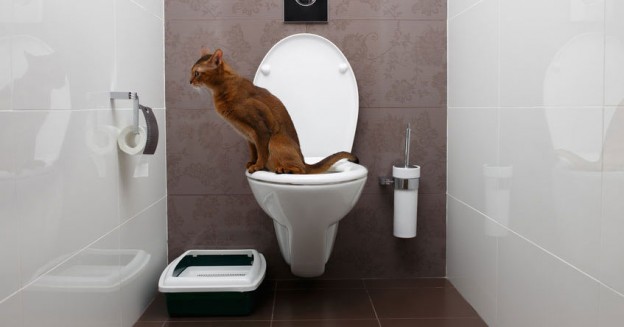The Risks of Disposing Cat Poop in Your Toilet - Preventive Steps
WebsiteNearly everybody is bound to have their own unique beliefs on the subject of Don’t flush cat feces down the toilet.

Intro
As feline owners, it's necessary to bear in mind how we take care of our feline close friends' waste. While it may seem practical to flush pet cat poop down the toilet, this method can have destructive consequences for both the environment and human wellness.
Ecological Impact
Flushing cat poop introduces unsafe virus and parasites into the water system, presenting a significant danger to marine environments. These impurities can negatively influence marine life and compromise water quality.
Health Risks
In addition to environmental worries, purging cat waste can also position health risks to human beings. Feline feces might include Toxoplasma gondii, a parasite that can cause toxoplasmosis-- a possibly extreme health problem, especially for pregnant women and individuals with weakened body immune systems.
Alternatives to Flushing
Luckily, there are safer and much more accountable methods to take care of feline poop. Consider the following choices:
1. Scoop and Dispose in Trash
The most common method of dealing with feline poop is to scoop it right into a naturally degradable bag and toss it in the trash. Make sure to utilize a committed trash inside story and take care of the waste immediately.
2. Use Biodegradable Litter
Go with eco-friendly cat litter made from products such as corn or wheat. These trashes are environmentally friendly and can be safely disposed of in the trash.
3. Bury in the Yard
If you have a lawn, consider burying feline waste in an assigned location away from veggie yards and water resources. Be sure to dig deep adequate to stop contamination of groundwater.
4. Set Up a Pet Waste Disposal System
Invest in a pet dog waste disposal system especially developed for cat waste. These systems make use of enzymes to break down the waste, decreasing smell and environmental effect.
Final thought
Responsible family pet ownership expands past supplying food and sanctuary-- it additionally includes appropriate waste monitoring. By refraining from purging feline poop down the toilet and selecting different disposal techniques, we can decrease our environmental footprint and shield human wellness.
Why You Should NEVER Flush Cat Poop (and/or Litter) Down Your Toilet
The Problem with Litter
The main function of litter is to solidify and adhere to your cat’s waste. While this makes litter excellent for collecting cat poop and urine, it’s also the exact property that makes it a nightmare when flushed down the toilet.
Cat litter can and will clog pipes. There is non-clumping litter, but it’s still quite heavy and can build up in pipes. This is true even of supposed “flushable litter.”
The problems only compound when the litter is already clumped into cat waste. Toilet paper is among the more flushable things, and even too much of that will clog a toilet.
The Problem with Cat Poop
Sewers and septic systems are designed with human waste in mind. The microbes that help break down human waste don’t work on cat waste. Additionally, cat poop plays host to the parasite Toxoplasma gondii.
When flushed, this parasite can enter the environment in places it was never meant to, posing a risk to pregnant women, their unborn children, and other people with compromised immune systems. While it might not seem possible, flushing cat poop can indeed introduce this parasite to the public water supply.
These reasons are why, even if you’ve trained your cat to go on the toilet and flush, which is possible, it’s still not a good idea. Also, pregnant women and the immunocompromised shouldn’t change litter, either.
How to Handle Litter
The best way to handle litter is to simply put it in a plastic bag and place it in the trash. Avoiding environmental risks and possible plumbing damage is worth the extra effort.
You can also invest in devices that seal away your cat’s waste in a separate compartment, so you don’t have to change the litter nearly as often. They’re also safer for pet owners because they limit the possibility of Toxoplasma gondii exposure.
Disposing of litter the old-fashioned way will ensure you won’t have to worry about any issues that flushing the waste can potentially cause.
Take Care of Clogged Pipes with Stephens Plumbing, Heating & Air Conditioning
The reasons you should never flush cat poop down your toilet are numerous, but sometimes the inevitable happens despite your best efforts.
Stephens Plumbing, Heating & Air Conditioning is ready to help if you’re experiencing litter-blocked plumbing. Whether you need us in an emergency or want to schedule regular maintenance, we’re here for you.
https://www.stephensplumbing.net/bathroom-plumbing/never-flush-cat-poop-down-your-toilet/

We were guided to that editorial on How to Dispose of Cat Poop and Litter Without Plastic Bags through someone on a different web property. Sharing is caring. Who knows, you could be doing someone a favor. Many thanks for your time. Kindly stop by our website back soon.
Customer Reviews